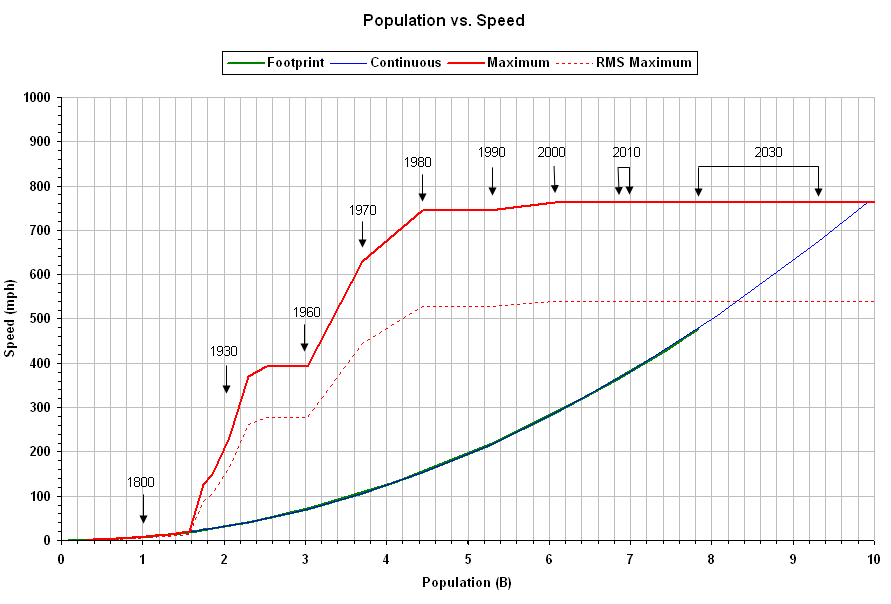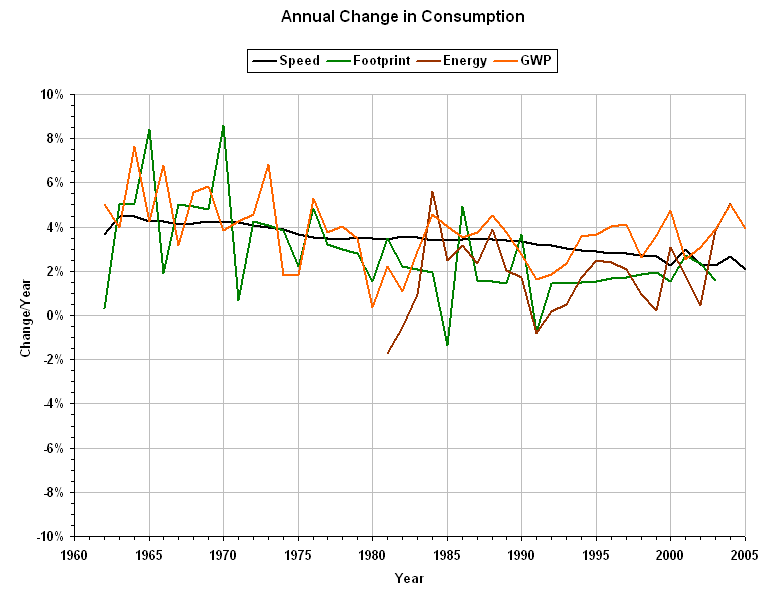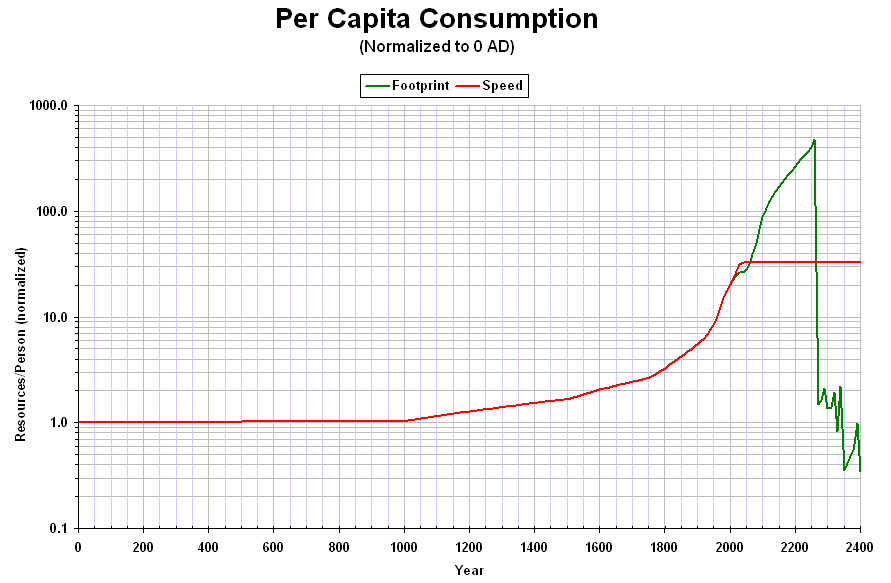To survive, individuals in groups must work together to collect and distribute resources. Using this fact, speed and population can be linked in a "speed model" to project population size.
For every transaction, two resources are required to be exchanged, and the total number of transactions is one-half the square of the population (everyone in the group trades with everyone in the group directly or indirectly). For each resource, an average distance must be traversed to move the resource from its original location to a member of the group. Since there is a fixed amount of time, the amount of resources consumed (traded) is proportional to the number of transactions, which is proportional to the speed (total distance traveled in the fixed unit of time).
When the maximum speed is attained, any increase in the number of transactions will result in fewer resources being consumed per transaction (and per person); and below a survival threshold of consumption per capita may result in population reduction. Conversely, increasing the resources per transaction will force a reduction in the number of transactions and therefore the number of people (population).
Below is a plot of world population and speed, along with relevant dates. The population grows ("Continuous") until a maximum speed is reached and then stays constant. The maximum speed is shown, based on world land speed records, along with the Root Mean Square (70%) of the maximum speed. For reference, the consumption model's population projection is shown for ecological resource depletion ("Footprint") along with historical data.

Below is per capita consumption, normalized to the value in 0 A.D., for both the ecology-limited and speed-limited population projections ("Continuous" above). Note that if the reference value was a minimal 0.1 hectare, then the projected value for today (< 2.3) would be close to the actual value (2.5).
As shown below, the annual change in speed (resource consumption) compares well with the historical annual changes in consumption of ecological resources (footprint), energy (energy production), and ecological resources (Gross World Product).

For detailed calculations, see Excel workbooks.
For discussion of related issues, see Idea Explorer blog (beginning with Maximum Community Size).
(1) Robert Engelman, Population Action International, based on various written works by historians and demographers; United Nations, World Population Prospects: The 2002 Revision (New York: 2003). For historical estimates, see also U.S. Bureau of Census, “Historical Estimates of World Population,” at <www.census.gov/ipc/www/worldhis.html>. (Citation copied from Worldwatch Institute CD-ROM.)
© Copyright 2008 Bradley Jarvis. All rights reserved.
